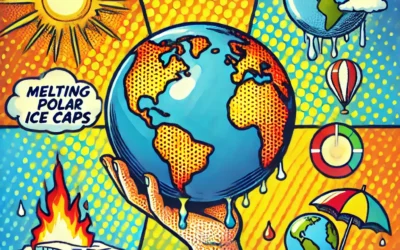Biodiversity “Protected Areas”: What They Are and Why They Matter
Biodiversity is the variety of life on Earth. It includes all living organisms, from plants and animals to fungi and bacteria. Biodiversity is essential for the functioning of ecosystems, which provide us with many benefits such as food, water, climate regulation, and recreation.
However, biodiversity is under threat from human activities such as habitat loss, overexploitation, pollution, invasive species, and climate change. According to the Global Biodiversity Outlook 5, none of the 20 Aichi Biodiversity Targets for 2020 have been fully achieved, and only six have been partially achieved. The report warns that biodiversity loss will have severe impacts on human well-being and the achievement of the Sustainable Development Goals.
One of the most effective ways to conserve biodiversity is to establish and manage protected areas. They are areas of land or water that are designated and managed for the conservation of nature and the provision of ecosystem services. They can range from national parks and wildlife reserves to community conserved areas and sacred sites.
How Much of the World Is Protected?
The World Database on Protected Areas (WDPA) is the most comprehensive global dataset on terrestrial and marine protected areas. It is maintained by the United Nations Environment Programme World Conservation Monitoring Centre (UNEP-WCMC) and the International Union for Conservation of Nature (IUCN).
According to the WDPA, as of December 2020, there were 245,791 areas covering 22.5 million km2 of land and 28.1 million km2 of ocean. This represents 15.1% of the world’s terrestrial and inland water areas and 7.6% of the global ocean.
The global average of protected area coverage masks significant regional and national variations. For example, while Europe and Central Asia have the highest percentage of terrestrial protected area coverage (23.4%), they have the lowest percentage of marine protected area coverage (2.9%). Conversely, Oceania has the highest percentage of marine protected area coverage (21.9%), but the lowest percentage of terrestrial protected area coverage (13.5%).
Moreover, some countries have exceeded the global targets of protecting at least 17% of terrestrial and inland water areas and 10% of coastal and marine areas by 2020, while others are lagging behind. For instance, Brazil has protected 29.6% of its terrestrial area and 26.7% of its marine area, whereas India has protected only 6.1% of its terrestrial area and 1.2% of its marine area.
How Effective Are Protected Areas?
The mere existence of the areas is not enough to ensure the conservation of biodiversity. The areas need to be effectively managed, equitably governed, and ecologically representative and connected. They also need to be monitored and evaluated to assess their performance and impact.
The IUCN Green List of Protected and Conserved Areas is a global standard and certification scheme that recognises and promotes effective and equitable The areas. It is based on a set of criteria and indicators that measure the quality of governance, management, design, and conservation outcomes of protected areas. As of December 2020, there were 59 sites from 16 countries on the IUCN Green List.
The Protected Planet Report 2020 is a biennial assessment of the state of protected and conserved areas around the world. It is produced by UNEP-WCMC, IUCN, and the National Geographic Society. The report provides the latest data and trends on protected area coverage, management, governance, equity, and connectivity. It also analyses the progress towards the global biodiversity targets and the post-2020 global biodiversity framework.
Some of the key findings of the report are:
- The world has made significant progress in expanding the global network of protected and conserved areas, but more efforts are needed to ensure their quality and effectiveness.
- Only 8% of the world’s key biodiversity areas are completely covered by protected areas, and only 20% of the world’s land and sea areas are within 50 km of a protected area.
- Only 19% of the world’s areas have a documented management plan, and only 7% have a documented management effectiveness assessment.
- Only 8% of the world’s areas report the existence of an equitable governance mechanism, and only 5% report the existence of a grievance redress mechanism.
- Only 7% of the world’s areas are connected to each other through ecological corridors, and only 2% are connected to each other through transboundary cooperation.
The OECD Indicator measures the percentage of each country’s land and marine area that is designated and managed for the conservation of nature and the provision of ecosystem services.
How Can We Improve Protected Areas?
Protected areas are vital for the conservation of biodiversity and the provision of ecosystem services. However, they face many challenges and threats, such as insufficient funding, inadequate management, illegal activities, climate change, and human-wildlife conflicts.
To address these challenges and enhance the effectiveness and sustainability of protected areas, the report recommends the following actions:
- Increase the quantity and quality of protected and conserved areas, especially in underrepresented and highly threatened regions and ecosystems.
- Strengthen the governance and management of protected and conserved areas, ensuring the full and effective participation of indigenous peoples and local communities, and respecting their rights and interests.
- Enhance the connectivity and integration of protected and conserved areas, both within and across landscapes and seascapes, and with other sectors and stakeholders.
- Mobilise the necessary financial and human resources for protected and conserved areas, diversifying the sources and mechanisms of funding, and building the capacity and skills of practitioners and managers.
- Monitor and evaluate the performance and impact of protected and conserved areas, using standardised and harmonised methods and indicators, and sharing the results and lessons learned.
Conclusion
Protected areas are vital for the conservation of biodiversity and the provision of ecosystem services. However, they face many challenges and threats, such as insufficient funding, inadequate management, illegal activities, climate change, and human-wildlife conflicts.
To address these challenges and enhance the effectiveness and sustainability of protected areas, we need to increase their quantity and quality, strengthen their governance and management, enhance their connectivity and integration, mobilise the necessary financial and human resources, and monitor and evaluate their performance and impact.
By implementing these actions, we can ensure that protected areas are not only a cornerstone of biodiversity conservation, but also a catalyst for sustainable development and human well-being.






